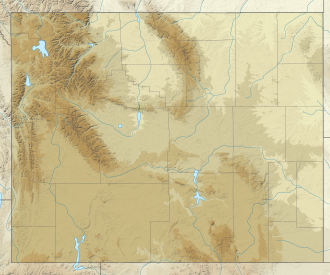| Wrangler Lake | |
|---|---|
| Location | Yellowstone National Park, Park County, Wyoming, US |
| Coordinates | 44°41′0″N110°26′5″W / 44.68333°N 110.43472°W |
| Basin countries | United States |
| Surface elevation | 7,850 feet (2,390 m) |
Wrangler Lake is a lake located in Yellowstone National Park in the U.S. state of Wyoming. It is a few miles from the Wapiti Lake Trailhead.

